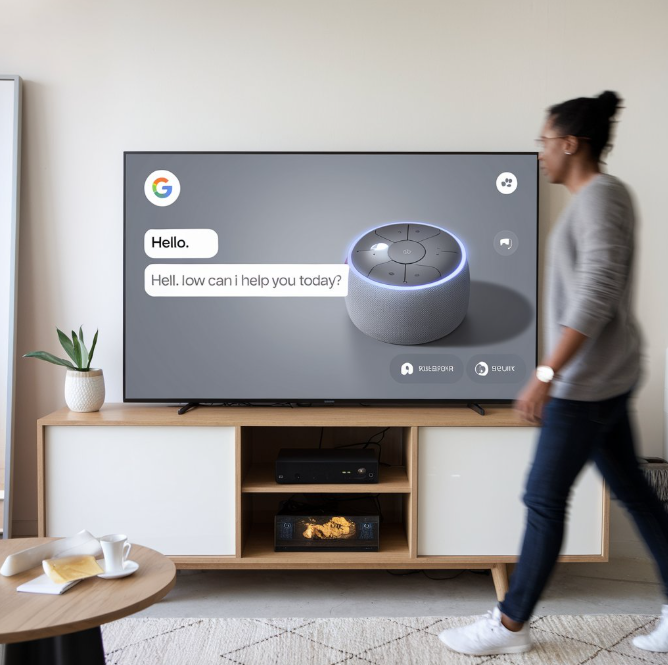Do you want a television that can tell when you’re in the room and when you’re not? Google certainly hopes so. The tech giant gave a sneak peek at an ambient mode for Google TV devices at CES 2025. This mode will enable compatible devices to detect when a human is present and show appropriate content.
For instance, without anybody needing to say a command or click a button, the enormous screen in front of us displayed information like news headlines, the weather, calendar appointments, and pictures from a recent trip as I walked up to the couch in the demo room with a Google product manager.
2025-01-05-at-10-47-52pm.png screenshot
As soon as you enter the room, Google TVs will be able to display pertinent information.
CNET’s Lisa Eadicicco
The idea is
not at all new. Presence-detection functions in TVs have been provided in some capacity by companies including Amazon, Samsung, and Sony, with Sony having done so since 2009. However, Google hopes that the new Google Assistant version that utilizes the company’s Gemini models, along with presence detection, would make the TV more of a living room center than an entertainment device.
Read more: Using cutting-edge technology, new Hisense TVs become enormous
Jamieson Brettle, a Google product manager, stated during the demonstration, “Our vision is that this can be something so much more,” “Like a smart display that sits in your living room, and it’s the largest screen in your house.”
New goods from Google TV
While the Gemini upgrade will be available to both new and old models throughout the year, devices that support both proximity detection and Google Assistant with Gemini capabilities will be arriving towards the end of the year.
Watch this: Neo QLED and Samsung OLED TVs Increase AI and Reduce Glare
03:54
Google does not use cameras to determine if you are present in a room. Brettle claims that instead, it is a motion-sensing device that functions similarly to radar and is unable to view the individual or their environment. According to Brettle, the choice to employ this technology rather than cameras was made based on economic considerations while maintaining power management and privacy.
In order to make Google’s voice assistant operate on TVs, the new Gemini feature appears to be a little expansion of the Google Assistant’s current Google TV capabilities.
like how it functions on mobile devices. The goal is to enable more natural conversation with the Google Assistant and allow you to ask more detailed inquiries with follow-up requests. In one instance, when Brettle requested kid-friendly films like Jurassic Park, it displayed The Land Before Time.
Brettle also demonstrated how the Google Assistant with Gemini’s models can now respond to specific questions using YouTube videos, as when requesting suggestions for a trip. Additionally, there is a news brief feature that provides a synopsis of news articles and identifies the item’s source.
YouTube-TV-Google-Search-Results
YouTube videos may be retrieved by the Google Assistant with Gemini models.
Lisa
CNET/Eadicicco
Over the past two years, as generative AI has revolutionized the computer sector, Google has been incorporating AI into its main products, from its search engine to Pixel phones. The most recent attempt by Google to integrate AI into its core services and platforms is the Google TV Gemini upgrade. At CES, Samsung unveiled a few new AI TV capabilities, including one that gives you additional details about what’s on your TV, so it’s not the only company attempting to bring AI to the large screen in your house.
Whether or if these features will be genuinely helpful to individuals is the question. Even if TVs are capable of far more than just playing video games or streaming Netflix, it’s difficult to see new AI functions like these being a big selling point.
not yet.
See all of the AI capabilities in the newest Samsung TVs or browse the most absurd and strange CES devices of this century for more from CES 2025.
